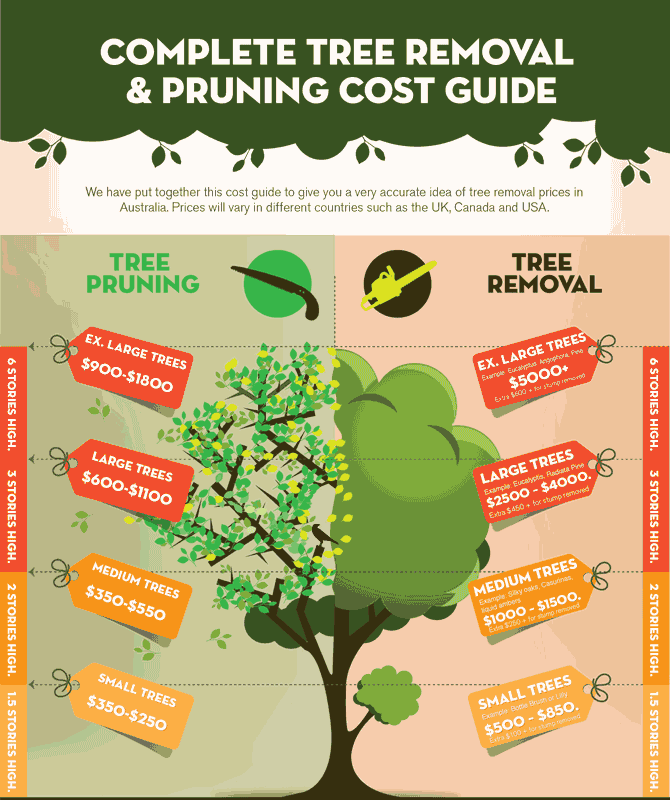Tree Care Throughout The Seasons: Best Practices For Taking Care Of Trees Before And Adhering To Removal
Tree Care Throughout The Seasons: Best Practices For Taking Care Of Trees Before And Adhering To Removal
Blog Article
Staff Author-
When it concerns seasonal tree treatment, ensuring proper administration before and after elimination can substantially affect the health and wellness and aesthetic appeals of your landscape. By understanding the needed steps associated with examining tree health and wellness and preparing for removal, you can proactively protect your building. But what regarding the essential techniques to comply with when the tree is gone? Stay tuned to discover the essential post-removal care procedures that will help you cultivate a growing and lasting environment for your trees.
Pre-Removal Tree Care
Prior to addressing the removal of a tree, it's critical to focus on pre-removal tree care. Beginning by assessing the tree's wellness and architectural honesty. Seek indicators of condition, insect invasions, or any architectural concerns that might pose a safety danger during elimination. It's important to speak with a qualified arborist to identify the best strategy.
Pruning dead or diseased branches can stop more damage to the tree and make sure a smoother removal process.
Additionally, think about the ecological impact of removing the tree. Trees play an essential function in our environment, so planting a new tree in an ideal place can help balance out any kind of loss. Make certain that you have the required permits and permissions for tree removal, especially if the tree is shielded by neighborhood guidelines.
Seasonal Upkeep Tips
Assessing your tree's needs throughout the year is necessary for its health and long life. To maintain your trees in leading condition, follow these seasonal maintenance suggestions.
In springtime, focus on trimming to eliminate dead or damaged branches and motivate new growth.
https://www.housebeautiful.com/room-decorating/outdoor-ideas/g30679369/outdoor-backyard-lighting-ideas/ asks for regular watering, particularly throughout dry spells, to ensure your tree remains hydrated.
As autumn techniques, watch out for very early indicators of disease or tension, and take into consideration applying compost to safeguard the roots throughout winter months.
In winter season, beware when getting rid of snow from branches to stop damage, and remain to check your tree's overall wellness.
Keep in mind to adjust your treatment routine based on the particular requirements of your tree varieties and regional climate. By remaining attentive and positive throughout the periods, you can help your trees thrive and prosper for several years to find.
Post-Removal Tree Treatment
To make certain the wellness of your landscape even after tree removal, appropriate post-removal care is vital. After a tree is removed, it's important to fill the remaining hole with topsoil and small it to avoid settling. This will help maintain the honesty of the ground and protect against possible dangers in the future.
Consider planting new vegetation in place of the removed tree to restore the balance and visual appeals of your landscape. On https://can-tree-roots-crack-a-fo84061.blogsmine.com/31756210/discover-the-crucial-elements-that-will-help-you-in-selecting-one-of-the-most-suitable-option-for-your-tree-removal-demands to advertise the development of new plants and stop dirt erosion.
Inspect the surrounding trees for any type of indicators of disease or stress and anxiety that might have been triggered by the removed tree. Keep an eye out for bugs that may've been brought in to the previous tree and take preventive measures to secure the staying greenery.
If needed, consult with an expert arborist to analyze the impact of the removal on the surrounding trees and identify any kind of added care required. By complying with these post-removal treatment steps, you can make sure the ongoing health and elegance of your landscape.
Final thought
Finally, aggressive seasonal tree care is important for keeping the wellness and equilibrium of your landscape. By assessing tree health and wellness, trimming, and consulting with an arborist prior to elimination, you can ensure a risk-free process. After elimination, filling the hole, growing new greenery, and normal watering will advertise new development and avoid disintegration. Remember to inspect surrounding trees for illness and seek additional care steps from an arborist to maintain your landscape growing.
